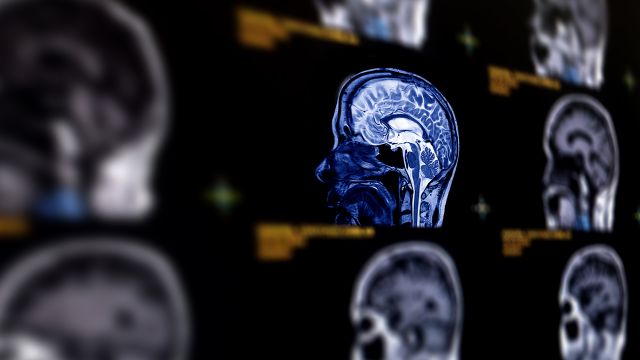We rely on our arteries to carry oxygen-rich blood to all the organs, muscles and tissues of the body. Every beat of the heart sends more blood through the arteries; with the heart beating about 115,000 times every day, that’s a lot of traffic. And if an artery wall weakens—perhaps due to high blood pressure or smoking—it could cause an aneurysm.
An aneurysm is a bulge or ballooning in an artery wall that may burst or rupture. It can happen anywhere in the body, and a ruptured aneurysm is fatal up to 80 percent of the time, depending on where it's located. About two-thirds of people who get abdominal aortic aneurysms (AAA) are men, but researchers don’t know why that is. Brain aneurysms, on the other hand, are more common in women.
Here’s more of what we know—and don’t know—about aneurysms.
Where and why aneurysms happen
“Aneurysms most commonly occur in the abdominal aorta and the brain,” according to Joshua Greenberg, MD, a vascular surgeon with Mercy Health in Michigan. They happen almost exclusively in arteries, and almost never in veins.
Other risk factors for developing an aneurysm, besides gender, include:
- Smoking
- Genetics
- High blood pressure
- Atherosclerosis
- Age: Brain aneurysms are more likely to occur after age 40, while the risk of AAAs increases after 65
“I tell people the top five risk factors for aneurysms are smoking, smoking, smoking, high blood pressure and genetics,” says Dr. Greenberg.
Most aneurysms don’t have symptoms. “Most people don’t know they have one until it ruptures," says Greenberg. "Or, it’s found incidentally when a healthcare provider is looking for other things, like during a CT scan for kidney stones, for example."
Large aneurysms are more likely to rupture than smaller ones, according to Greenberg. As for what causes them to grow, “We don’t really know,” says Greenberg. “We know it has to do with inflammation, with certain enzymes that degrade tissues, with the growth of new blood vessels and with biophysical properties like artery wall strength. But as to how those intertwine and work together, we don’t know.”
Treating aneurysms
A ruptured aneurysm is an emergency. AAA ruptures are fatal about 80 percent of the time; it’s about 40 percent for brain aneurysms. You can screen for some kinds of aneurysms. The United States Preventive Services Task Force recommends AAA screening for men who have ever smoked and who are between the ages of 65 and 75.
Once an aneurysm is identified, the person is watched closely. “We follow them until the aneurysm meets the criteria for repair—in abdominal aortic aneurysms, that threshold is 5 centimeters (cm) for women and 5.5 cm for men,” Greenberg says.
Abdominal aortic aneurysms are repaired in one of two ways. An open aneurysm repair used to be the standard treatment; it involves removing the portion of the artery with the aneurysm and replacing it with a synthetic graft. According to Johns Hopkins University, it's the second deadliest surgery next to colon removal. People who survive may take weeks or months to recover.
The second kind of repair involves a stent, a small fabric-and-metal tube designed to keep arteries open. Stents for AAA repair have been FDA-approved since 1999, and now most repairs use stents, according to Greenberg. “It’s minimally invasive and I can do a repair in one to two hours,” he says, adding that the mortality rate is much lower than with an open repair, at least in the short-term.
To do a stent repair, a surgeon will make a small incision in the groin and snake the stent up through the artery to the site of the aneurysm. People with a stent repair can typically go home in three to five days. “There are very few reasons to do an open repair anymore,” Greenberg says. Open repairs are mainly used now when an aneurysm’s shape or position makes using a stent too difficult.
Stents are also used to repair brain aneurysms. A stent can be used in the artery to divert blood away from the aneurysm, or a coil may be placed inside the aneurysm to cut off the blood supply. The other option is clipping, during which a doctor opens the skull and places a metal clip at the base of an aneurysm to prevent blood flow from feeding it, which could make it bigger or cause it to burst. In some cases an unruptured brain aneurysm may be monitored.
Slow it down
If you have an aneurysm, you can take steps to reduce the chance of rupture while you wait to have it repaired. “Aneurysms don’t shrink, but their growth can be slowed or stabilized,” Greenberg says. He suggests trying to lower inflammation with exercise, keeping your blood pressure under control—and not lighting up: “We know that cigarette smoke produces enzymes that break down tissue, so don’t smoke. Anything you can do to make yourself healthier with less inflammation is good for an aneurysm.”






